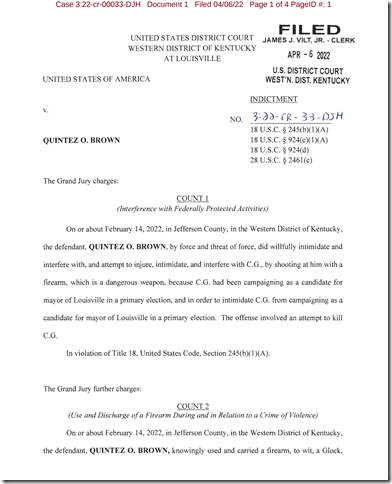They know what they’re trying to engineer. I don’t believe they will succeed on this front at all, but they definitely have their goals, which is to engineer a food crisis.
There’s more than enough supplies for everyone. We have an abundance of goods and resources. But they’ve been trying to hide them, destroy them, and suppress them in order to cause this food crisis.
It’s why The Mad Pedo extended the Ethanol rule today. He wants corn being burned in fuel, instead of being used as calories to feed humans. He’d literally rather it be lost in a gunky petrochemical slurry he can hyperinflate beyond the means of the average American, instead of it going into food.
There’s nothing more that The Mad Pedo (and the Shadow President) behind him would like better than to pin gas at 10 dollars a gallon or more, and have bare shelves for the masses.
ℕ𝔼𝕆ℕ ℝ𝔼𝕍𝕆𝕃𝕋 @NeonRevolt
April 12, 2022
Posted on Gab
[Heavy sigh… This is probably not true.
On the farm we never raised any corn other than a little bit in the garden for our own use. Yet, I knew there was only a very minor chance of the expressed hypothesis being correct. A few seconds with a search engine confirmed my suspicion.
The variety of corn used to produce ethanol is not going to be something humans normally eat directly. According to this “Yellow Dent Corn (Field Corn)” is used for ethanol and livestock feed. The Field Corn will remain in the field until the kernels are dry and hard (think popcorn dry and hard). Before being feed to livestock it is rolled or cracked. Field corn is also used for corn meal, corn oil, and corn syrup.
The corn you find on your dining room table, fresh on the cob, creamed corn, or on the salad bar is “Sweet Corn”.
Sweet Corn is harvested when the kernels are soft and not ripe in the sense that the kernels are not mature enough to germinate (the kernels are in the “milk stage”) if they were planted.
Beyond the above, the equipment for harvesting and processing sweet corn is completely different from that used to process field corn. Sweet corn producers are not going to switch to field corn on a whim for a one year chance of selling into the expanded ethanol market. The return on investment for the new equipment for a single crop year would negate the potential for increased prices of field corn.
Ethanol producers may not have excess capacity to utilize the increased market size. Does anyone know? I suspect the unexpected increase in the market size cannot be fully exploited. This will reduce the impact to the food uses of field corn.
The gasoline producers have to purchase the corn on the open market. If the food usage of field corn is in short supply people will pay higher prices to compete with the ethanol producers. The market will balance the tradeoff between higher gasoline prices/shortages and higher food prices/shortages.
Another point to be made is that at this point the farmers and seed provides have already committed themselves for this year’s crops. I would guess than many already have the crop in the ground. And if not, they couldn’t switch to an ethanol crop in any game changing way because there wasn’t enough seed prepared for such a change.
Bottom line, I’m very skeptical that allowing industry to purchase field corn for ethanol production this summer can make a material difference in the U.S. food supply.—Joe]
Like this:
Like Loading...





